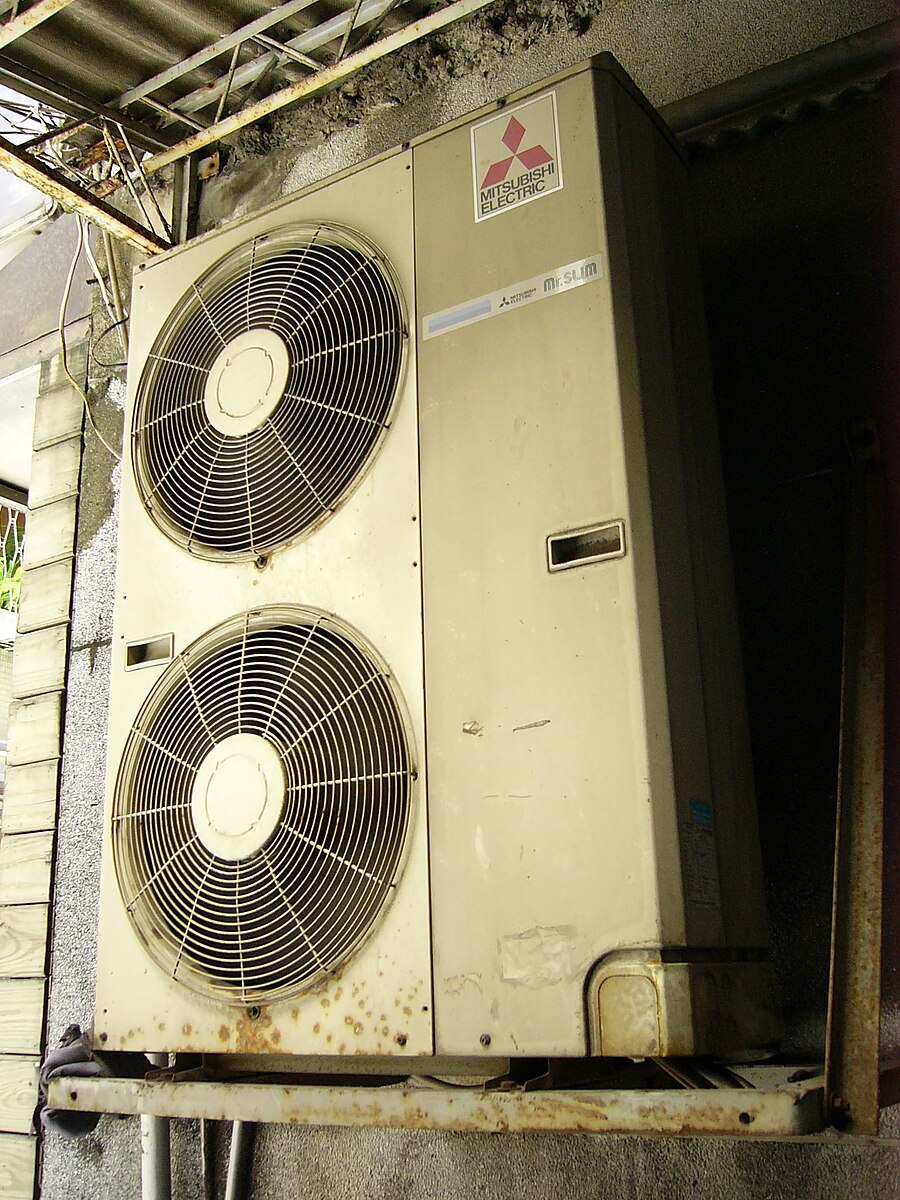Servicing a Mitsubishi air conditioner at home can be a straightforward task, but it requires attention to detail and the right tools. This comprehensive guide will walk you through the step-by-step process of cleaning and maintaining your Mitsubishi air conditioning unit, ensuring it operates efficiently and effectively for years to come.
Necessary Tools and Supplies
To service your Mitsubishi air conditioner at home, you’ll need the following tools and supplies:
- Pair of gloves
- Cleaning cloth
- Vacuum cleaner
- Mitsubishi Electric Quick Clean accessory kit
Cleaning the Air Filter
 Image source: Mitsubishi ac By Solomon203
Image source: Mitsubishi ac By Solomon203
The air filter is the first component that requires regular cleaning, and it should be done every two weeks. Here’s how to clean the air filter:
- Remove the front panel of the wall unit by lifting it until you hear a click, holding the hinges, and pulling to remove.
- The panel can be wiped with a dry cloth or rinsed in lukewarm water before being dried with a soft cloth.
- Unclick the air filter and remove it.
- Light dust can be removed with low-power vacuuming, or the filter can be washed in lukewarm water for heavier dirt.
- Allow the filter to dry completely before reinstalling it.
Cleaning the Heat Exchanger
The heat exchanger is the next component that requires attention. This is best done when the unit has been off for at least five hours to avoid any moisture or heat buildup. Here’s how to clean the heat exchanger:
- Wearing gloves, vacuum the heat exchanger with the large brush attachment, following the fins in a vertical action.
- Use the small brush attachment to clean the harder-to-reach, narrow spaces at the top and bottom of the heat exchanger.
Cleaning the Fan Unit
Cleaning the fan unit is a crucial step in servicing your Mitsubishi air conditioner. These instructions are specific to Mitsubishi Electric models fitted with a Quick Clean Body, which allows easy fan access. If your fan unit looks different, consult your instruction manual.
- Turn the horizontal vanes downward and remove them by unlocking both sliding tabs to the right.
- Swing out the two vertical vanes one by one and clean the air outlet with a soft, dry cloth.
- Using the Quick Clean Kit adapters, move your brush along the blades of the fan horizontally.
- Place the vertical vanes back into their respective guides one by one, ensuring they click into place.
- Install the horizontal vane by following the removal steps in reverse.
Cleaning the Front Panel
The front panel of your wall unit also requires cleaning. Here’s how to do it:
- Lift the front panel of your wall unit until you hear a click, hold the hinges, and pull to remove.
- The panel can be wiped with a dry cloth or rinsed in lukewarm water before being dried with a soft cloth.
- Place the panel aside for now.
Cleaning the Outdoor Unit
In addition to the indoor components, it’s recommended to clean the outdoor unit of your Mitsubishi air conditioner at least once a year. Here’s how to do it:
- Turn off the power to the unit.
- Use a hose with a spray nozzle to rinse off any dirt or debris, aiming the water stream at the fins of the unit rather than the motor or electrical components.
- You can also use a soft brush to gently clean the fins and remove any stubborn dirt or grime.
Reassembly and Final Checks
After completing all the cleaning tasks, reassemble the air conditioner in reverse order, ensuring all components are properly secured and functioning correctly. Once the unit is reassembled, turn it on and check for any unusual noises or vibrations. If everything appears to be working correctly, your Mitsubishi air conditioner is now ready for continued efficient and effective operation.
By following this comprehensive guide, you can effectively service your Mitsubishi air conditioner at home, saving time and money while ensuring your unit runs at its best. Remember to consult your instruction manual for any model-specific instructions or variations, and always prioritize safety when working with electrical equipment.
